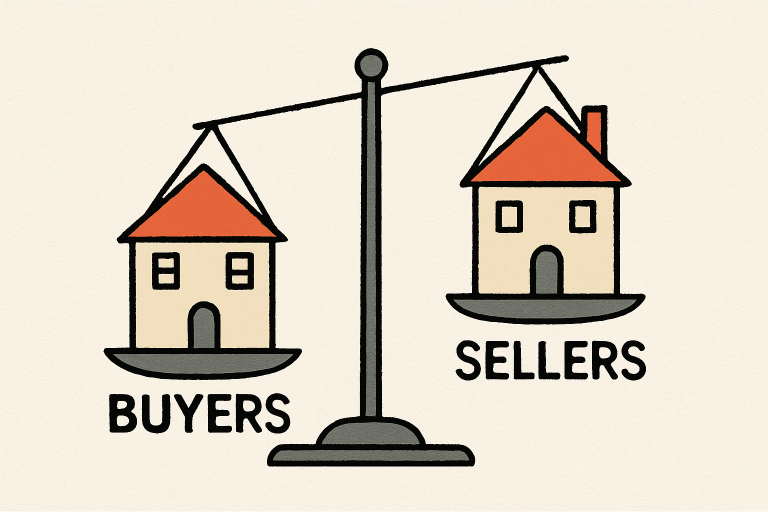Key Takeaways:
- The housing market in 2024 is shifting towards a buyer-friendly environment due to increased inventory and changing economic conditions.
- High mortgage rates and elevated home prices challenge affordability for many prospective buyers.
- Sellers are adjusting strategies, including price reductions and offering incentives, to attract buyers in a more competitive market.
Market Overview
The U.S. housing market in 2024 is marked by unmistakable shifts that create new opportunities and challenges for buyers and sellers. As housing inventory climbs and economic conditions continue evolving, the power dynamic in real estate is beginning to favor buyers after years of a strong seller’s market. This changing landscape is especially evident in communities where local realty professionals, such as the West Hartford real estate experts Gagliardi Team, monitor market conditions closely. These industry leaders agree: more homes are coming on the market, giving buyers expanded choices while compelling sellers to adapt their strategies.
These shifts impact decisions about pricing, marketing, and even the types of homes buyers pursue. Understanding the underlying trends and nuances of 2024’s market is vital for anyone considering buying or selling a home this year.
Increase in Housing Inventory
One of the defining characteristics of the 2024 housing market is the notable increase in housing inventory. According to the National Association of Realtors, active home listings surged 35.8% year-over-year as of August 2024, marking ten consecutive months of growth. This steady rise means buyers have more available options than in recent memory, helping to reduce the intense bidding wars that previously defined the market. With the higher supply, sellers are encouraged to price their homes more competitively and make strategic upgrades that help listings stand out.
For prospective buyers, larger inventory means less pressure to make quick decisions or enter bidding wars, creating a more measured and accessible buying process. As a result, homes generally stay on the market longer, allowing buyers more time for due diligence and consideration.
Impact of Mortgage Rates
Despite the increased housing supply, affordability remains a concern due to high mortgage rates. The average 30-year fixed mortgage now hovers around 7%, more than double the historic lows in 2020 and 2021 when rates dipped below 3%. Elevated borrowing costs mean monthly payments are higher, directly affecting how much home buyers can afford. First-time buyers especially feel the squeeze, as higher interest rates reduce purchasing power and make qualifying for loans more challenging.
This dynamic also influences sellers, who must recognize that many buyers are more cautious about stretching their budgets in 2024 than in previous years. Listings must be priced realistically to attract offers, especially in markets with expanding inventory.
Changing Buyer and Seller Dynamics
Power is shifting in the real estate market as inventory grows and demand levels out. Sellers are no longer able to command premium prices without making competitive adjustments. Recent data from Realtor.com indicates that nearly 20% of home listings experienced price reductions within the last month. In addition to lowering prices, sellers are increasingly willing to offer incentives such as covering closing costs, providing home warranties, or making repairs to sweeten the deal.
For buyers, this means more leverage during negotiations and the potential to find a home that better fits their financial and lifestyle needs. For sellers, creativity and flexibility are paramount to standing out in a crowded market.
Regional Variations in Market Trends
National trends often mask the extreme variability between local markets. In 2024, this divergence is pronounced. In Miami, sellers continue to outnumber buyers by nearly 3 to 1, signaling a strong buyer’s market and encouraging more attractive deals for those making offers. On the other hand, areas like Newark, New Jersey, are experiencing a distinct seller’s market, with almost 47% fewer sellers than buyers, which sustains upward price pressure and fast sales.
These disparities highlight the importance of localized market expertise. Buyers and sellers are encouraged to work with real estate professionals who can interpret data specific to their region and market segment.
Affordability Challenges
Affordability is perhaps the most pressing issue in today’s market. Home prices have soared by 53% in the past six years, far surpassing median household income growth. As of March 2024, only 21% of homes listed were considered affordable for households earning $75,000—a sizable gap that continues to grow. The lengthy gap between home price appreciation and wage growth means that many would-be buyers are priced out, especially in high-demand urban areas. Policymakers and the real estate industry are calling for more affordable housing inventory, as this disparity threatens to freeze a market segment and slow overall mobility.
Technological Advancements in Real Estate
Real estate technology has advanced rapidly since the pandemic, with virtual tours, digital closings, and online document signings now standard. These tools bring new transparency, speed, and efficiency to real estate transactions, making it easier for busy buyers and sellers to navigate the sales process. Virtual showings, for example, allow buyers to tour homes without leaving their current location, broadening the pool of available homes and connecting sellers with more prospective buyers. For sellers, a polished virtual presence is now a necessity rather than a luxury.
The Rise of Sustainable Housing
Sustainability is another growing priority. Today’s buyers, especially millennials and Gen Z, seek homes with energy-efficient appliances, smart home technology, and features like solar panels or EV charging stations. These preferences reshape the market, driving new construction norms and prompting sellers to make eco-friendly upgrades. These green initiatives appeal to environmentally conscious buyers and often make homes less expensive to operate over the long term, adding value for sellers willing to invest in such improvements.
As 2024 unfolds, buyers and sellers are urged to stay informed, flexible, and ready to leverage professional guidance to navigate a market defined by rising inventory, high borrowing costs, and evolving consumer demands. Adapting to these shifts will be essential for success in today’s real estate landscape.





